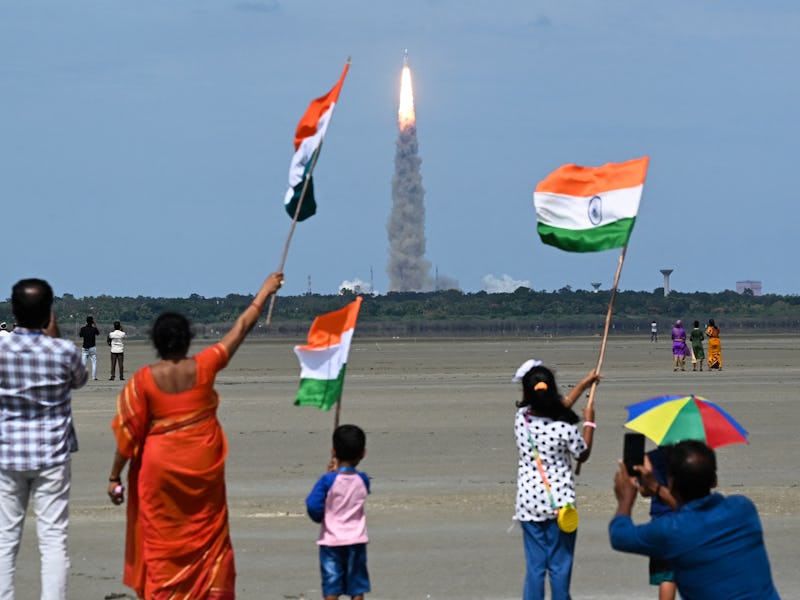Aditya-L1: India Will Attempt to Launch Its First Mission to the Sun This Weekend
The probe will travel far beyond Earth to continuously monitor our home star.

India is aiming to launch a new mission to the Sun as early as this weekend. This comes less than two weeks after India became the first country to successfully land at the south pole of the Moon.
India’s Aditya-L1 spacecraft is scheduled to launch on Saturday, September 2 at 2:20 a.m. Eastern. Following liftoff from Satish Dhawan Space Centre SHAR on the island of Sriharikota, located just north of Chennai on India’s eastern coast, Aditya-L1 will spend four months journeying to its final destination 1.5 million kilometers away from Earth.
Three onboard instruments will study the particles that reach the spacecraft, while four more will make direct views of the Sun. Altogether, the mission seeks to study how the Sun affects the rest of the Solar System.
An illustration of Aditya-L1.
India’s ambitions in space
India successfully placed its Chandrayaan-3 lander near the south pole of the Moon on August 23. This region is one of the most interesting places in the Solar System right now due to the presence of deep reserves of water ice. NASA’s first crewed mission to land on the Moon since Apollo plans to reach this lunar region, too. And Russia wanted to get there too, but its Luna-25 mission crash-landed there on August 20.
Now India has its eyes set on the Sun. To reach the star, Aditya-L1 will travel around Earth in elliptical orbits that get increasingly larger, before ultimately firing towards a gravitationally-stable place called Lagrange Point 1 (L1).
This perch, partway between the Sun and the Earth, provides observational advantages. According to the European Space Agency, L1 is “a good position from which to monitor the Sun since the constant stream of particles from the Sun, the solar wind, reaches L1 about an hour before reaching Earth.” According to NASA, L1 also offers an “uninterrupted” view of the star.
What will this mission study?
Aditya-L1 will collect data about the outer shells of the Sun. The star’s upper atmosphere influences the rest of the Solar System.
But these upper atmospheric layers, called the photosphere, the chromosphere, and the corona, still puzzle astronomers. According to the Indian Space Research Organisation (ISRO), Aditya-L1 will investigate the physics of the solar corona and its heating mechanism. It will also study solar flares, plus hunt for clues about the sequence of processes happening throughout several layers of the Sun. Much of its mission will be dedicated to studying big plasma spray events known as coronal mass ejections.
This all helps paint a clearer picture of solar weather, which planets experience even as far away as Neptune, as they bathe in the sea of charged particles radiating out from the Sun.